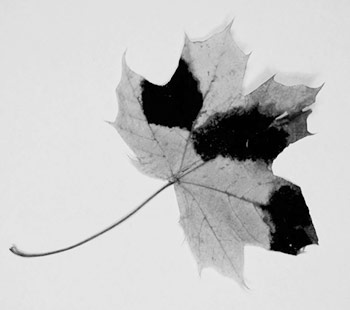
Do the enclosed leaves come from diseased trees? There have been spots on the autumn leaves from these 2 trees for the last couple years, but not as many as last fall. They are the neighbor’s backyard trees, but the leaves fall into our yard. Are they dangerous to other growth or to the soil in our garden? The neighbor said if we wanted to have them cut down, he would not object.
The maple trees are infected with a fungus known as “tar spot” (Rhytisma acerinum). Many maple species are host to the fungus which is readily visible and, therefore, one of the easiest maple diseases to diagnose. Fortunately, it is one of the least damaging ailments on its host. It can cause early leaf drop but does not cause serious harm to established trees.
The tar-like spot is a fruiting structure of the fungus that survives the winter on fallen leaves. The following spring, just as new leaves are unfolding, the fungal tissue in the leaves on the ground ripens. The surfaces of the spots split and minute, needle-like spores escape. The spores are carried by the wind and, if they land on new leaves of a susceptible host, they may germinate, penetrate the leaf tissue, and start a new disease cycle.
Tar spot will not affect your soil health. Fungi are host specific and this fungus will only affect maple and sycamore trees. The most effective management practice is to rake and destroy the infected leaves in the fall. This will reduce the number of overwintering “spots” (fungal reproductive structures) that can produce spores the following spring. An almost as effective alternative is to mulch the leaves. But the mulch pile should be covered or turned before new leaves begin to emerge in the spring in order to destroy many of the spores before they mature.
What is quite interesting is that the apparent absence of the fungus in urban areas and abundance in rural areas has led to its use as a biological indicator of air pollution. Researchers think the absence in urban areas is caused by the amount of sulfur dioxide (exhausted by combustion engines) in the air.
